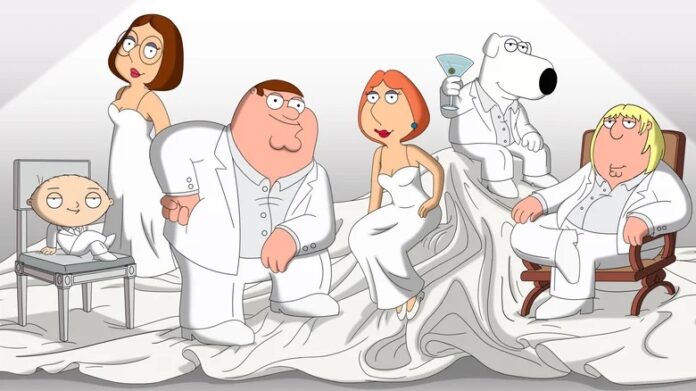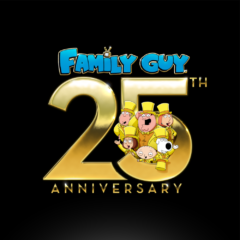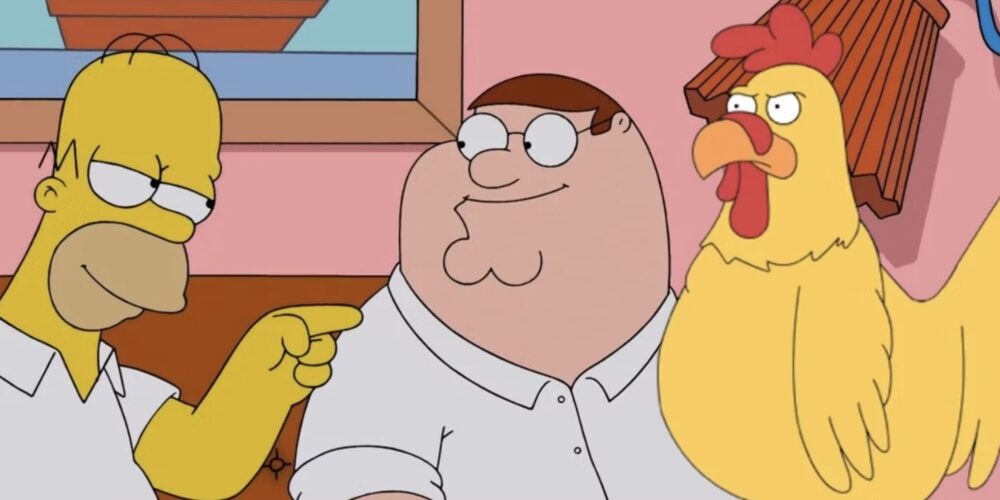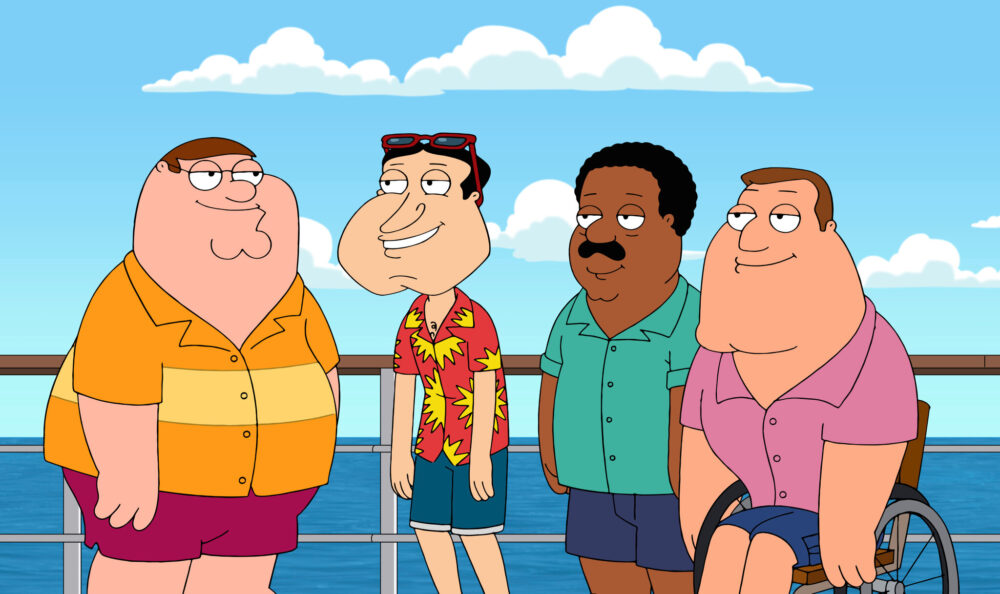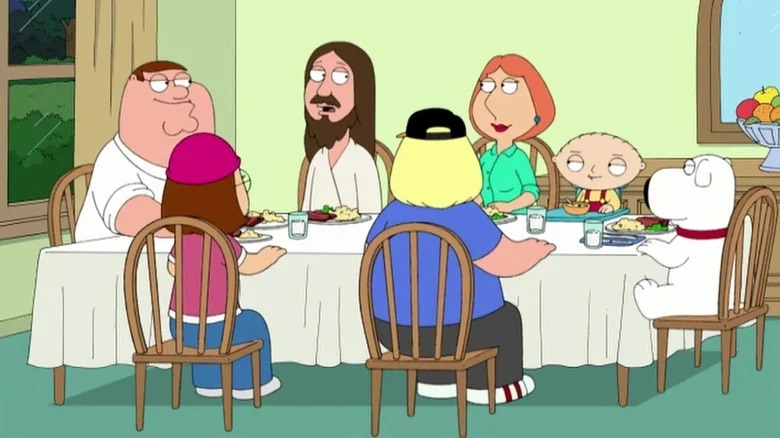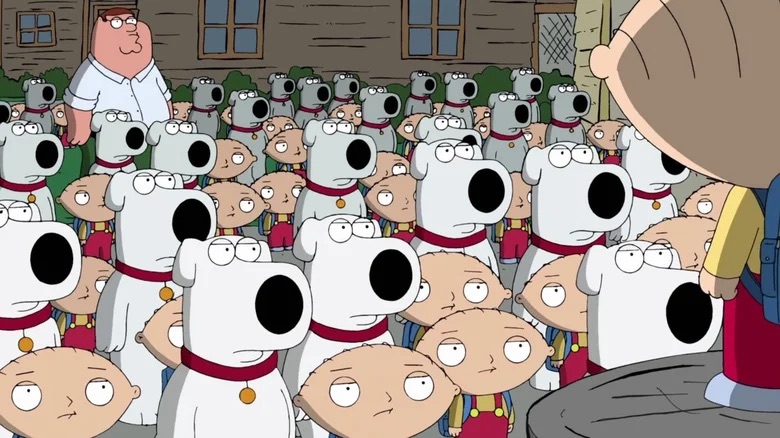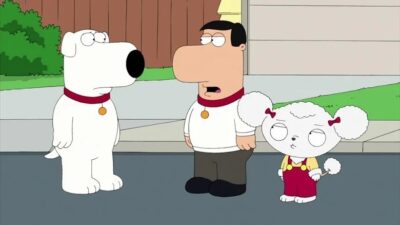|
Getting your Trinity Audio player ready...
|
[adrotate banner=”1124″]
January 2024 marked the milestone 25th anniversary of 20th Television Animation’s Family Guy, the raw and rowdy adult animation institution that first spawned on FOX way back in 1999 from the brilliant (and twisted) mind of creator, executive producer and lead voice actor Seth MacFarlane.
The show’s 22nd season finale aired on April 17 and, in honor of this auspicious occasion, we’ll take a spin back to Spooner Street to spend time with the Griffins and those imaginative folks who help create all the sublime silliness.
Within the endearingly dysfunctional Quahog, Rhode Island, the Griffin clan of Peter, Lois, Chris, Meg, diabolical genius baby Stewie and their anthropomorphic pet Lab named Brian, Family Guy reflects both the best and worst angels of our nature with irreverent jokes and a barbed wit. The current cast features MacFarlane voicing Peter, Stewie and Brian; Alex Borstein as Lois; Seth Green as Chris; Mila Kunis as Meg; and Arif Zahir as Cleveland Brown.
According to MacFarlane himself, Family Guy shows no signs of slowing down. “It’s still surviving and thriving,” he told The Wrap earlier this year. “It still has a sizable audience and is a perfect example of there being an appetite for something. So we continue to feed the beast. There’s no indication that the show is going to end anytime soon.”
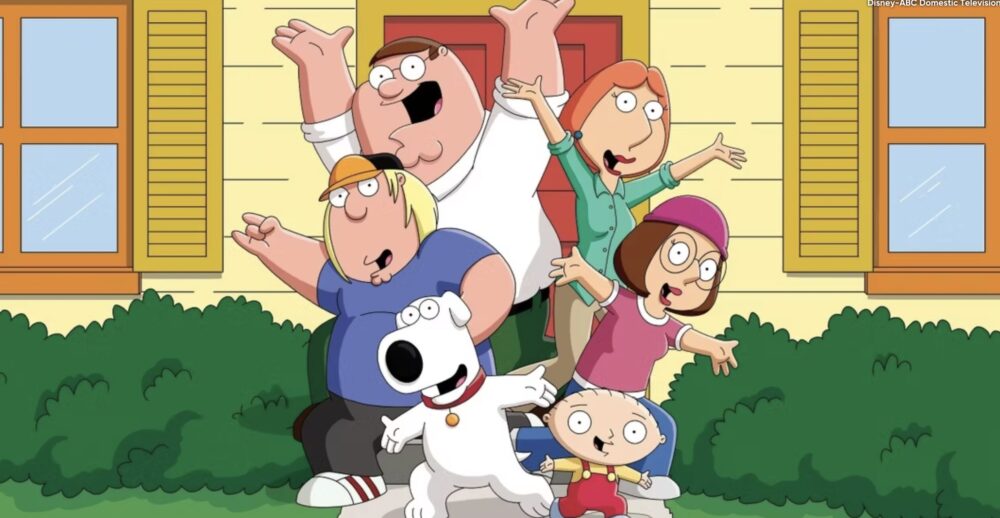
The multi-talented writer, director, producer and actor believes the goal of the show is just to make audiences laugh. “It delves into social allegory and politics now and then without question, as a good primetime animated show should, but that’s always secondary. It’s a room full of comedy writers who just want to f—g laugh … That’s the mission statement of the show and it doesn’t ever really try to position itself with any pomposity as anything more than that, which I think in this instance is probably a good thing.”
Longtime executive producers and co-showrunners Alec Sulkin and Rich Appel have been key elements of the award-winning series’ core crew of commanders that helped catapult Family Guy to the pinnacle of TV animation with a quarter-century of concentrated crackups.
But what’s precisely been the alchemy behind Family Guy’s remarkable success? And how has it survived the perils and pitfalls of popular entertainment to remain relevant in today’s easily triggered, politically correct environment? Appel has some inklings about its stamina.
“Built into the show are several explanations for its longevity,” Appel tells Animation Magazine. “Alec and I always say that Seth was prescient, because the DNA of the show with the cutaways and TV gags have given the show not just what we think are funny stories but also these bite-sized pieces that are perfectly suited to the social media changes in the last decade.
“One way the show stays fresh is when you’re writing almost sketch-like comedy that can be observational in a very specific way about stuff that’s happening in culture and it’s changing, people connect with that and then associate your show with being a fountain of more of those sorts of things. We have an advantage over a typical sitcom that’s challenged to tell an engaging, funny story, but doesn’t have the additional support of those kinds of bite-sized cutaways.”
Since 1999, the often-crowded adult animation landscape has conveniently evolved in lockstep with Family Guy’s sharp observational humor that mirrors modern sensibilities as other, less fortunate shows have dropped out of the game.
“Hollywood is nothing if not a town that likes to replicate success,” Sulkin adds. “So, I feel that a lot of networks have said, ‘Well, they found something with animation. Let’s make one of those ourselves.’ It’s sort of like the same people who say, ‘Let’s make a viral video.’ You don’t decide if it’s a viral video. It has to go out there and become a viral video organically.
“Luckily, with shows like The Simpsons and Family Guy, they’ve become viral videos. They achieved escape velocity or critical mass, whatever term you want to use. The word of mouth never stops. So, I feel like Family Guy has this instant name recognition. We have the advantage that everybody knows who we are and when people come to check us out, we have the goods.”
‘[Family Guy] still has a sizable audience and is a perfect example of there being an appetite for something. So we continue to feed the beast. There’s no indication that the show is going to end any time soon.’
— Creator Seth MacFarlane
Appel quickly points out that the three longest-running comedies on television are The Simpsons, Family Guy and South Park, something he and the entire Family Guy team is quite proud of.
“We respect those two shows a lot. I once worked at The Simpsons,” he says. “But I think it’s proof that some of the worry about audience sensibilities is overblown. Because each of those shows in their own way pushed the envelope and redefined what animated comedy can be. And the fact that each of them has had such a long, successful run, I think, supports the theory that they each have a strong brand, but each of those brands is not ‘play it safe.’ People enjoy having certain boundaries pushed a little bit, if it’s funny. That’s what Seth always says. At the end of the day the question he asks himself is, ‘Is the show still funny? Does it make people laugh?’”
Having such a competent cadre of creators behind him has allowed MacFarlane to develop a level of trust with his talented writers and dedicated showrunners, which affords him the time to still perform the character voices, but to also direct movies and create other television shows.
“When Family Guy came back after having been canceled, that’s when I joined the show,” Sulkin recalls. “Seth was there on the front line every day. He was the funniest and most important writer in the room all the time, and he was very hands-on with all of our episodes.”
The series has maintained a tightknit group of comedic minds that has allowed Family Guy to prosper for so long by cultivating a creative shorthand with its nucleus of veteran writers.
“And he has a backstop, because Seth voices 60 percent of the characters on the show, so by definition we know he’s reading the scripts because he has to record them,” Appel says. “Seth was actively here day after day for at least the first seven or eight seasons, and we have a half-dozen writers, Alec is one of them, who have worked in the room with Seth. In addition to just the experience of working with someone who’s the best Family Guy writer that’s ever been, someone who is the voice of most of the characters, there is that institutional memory that we kind of know what Seth’s voice, literal and narrative, is for the show.”
Family Guy has always shared a unique synchronicity with Star Wars and Star Trek fandom with its riffs and homages, not to mention the special episodes, that acts as a sort of crossover synergy that enlivens all three franchises, a point that’s never lost on Sulkin and Appel.
“I just think that Seth being a huge Star Trek and Star Wars fan really guided the comedy in those early years,” explains Sulkin. “With Star Wars you have the benefit of everybody’s seen it. Star Trek, if you haven’t seen it, you’re at least familiar with it. He was able to mine a lot of comedy out of these things that Star Trek and Star Wars fans had noticed, maybe because they’d watched the movies 10, 20, 50 times. Seth was the first one to vocalize it or turn it into a joke. The way that these fans are loyal to Star Wars and Star Trek, they become loyal to Family Guy, because they know that we’re making fun of these things, but they know that we also love them.”
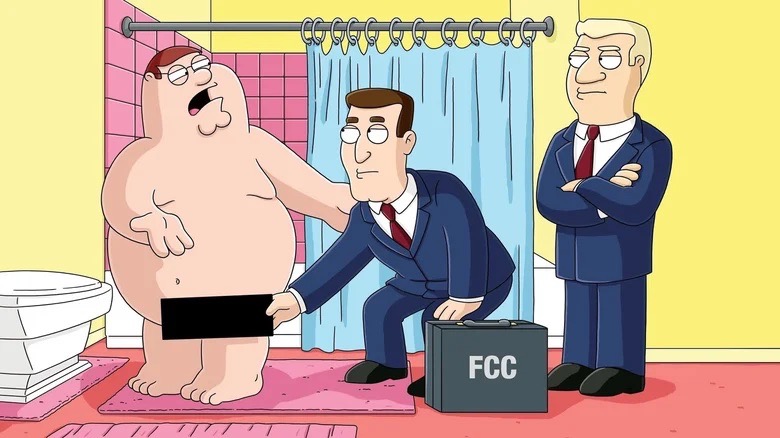
What does the future hold heading into its 23rd season this fall? Sulkin and Appel want to keep fans laughing, whether they’re newly discovering the show or have been there since its inception.
“We just had a nice celebration at PaleyFest LA, where they celebrated our 25th anniversary, and we have a few other things going forward this year to commemorate that,” Sulkin concludes. “What I hope for, and I would imagine what Rich and Seth hope for, is that fans continue to enjoy the show. It’s all about keeping Seth’s voice fresh. We just want to keep doing it and keep trying to be in step with our times.”
Family Guy will return to the FOX animation lineup in midseason. According to FOX, the show is still of “crucial importance” to the network and will receive a full season order, despite its move. All 22 seasons (425 episodes) of the show can be streamed on Hulu.
MacFarlane & Scorsese
Restore Cartoon Classics
The man behind modern pop culture staples such as Family Guy, American Dad!, Ted and The Orville, also has his eye on the animated gems of yesteryear. In April, it was announced that
the Seth MacFarlane Foundation has partnered with Martin Scorsese’s Film Foundation fund the first-ever, curated restoration of historically significant animated shorts from the 1920s to 1940s. The Family Guy creator studied animation at the Rhode Island School of Design prior to taking Tinseltown by storm. Over the course of his career, he has demonstrated an undiminished respect and appreciation for the venerable art form and its vibrant 115-year heritage.
Jillian Borders, UCLA Film & Television Archive’s Head of Preservation, helped to facilitate this project by leading the selection team to choose worthy candidates to be fully restored and digitally remastered to their previous glory for all posterity to enjoy.
“We work pretty frequently with The Film Foundation and they do grant applications every year so we usually apply for multiple grants and end up getting one-to-three grants per year to preserve films,” Borders tells Animation Magazine. “They find funding from outside donors and then help funnel it to us. Seth MacFarlane and Seth MacFarlane Foundation approached them because he’d heard about all the good work that Scorsese’s foundation does and he’s very interested in animation history and classic cinema.”
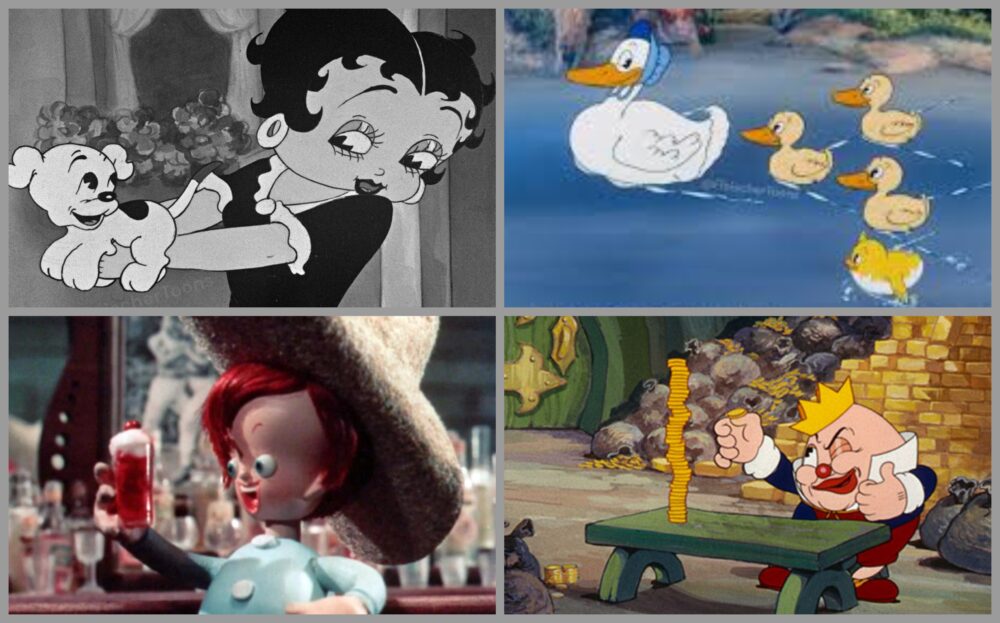
Music & Laughter by the Masters
The Film Foundation teamed up with UCLA to come up with a package of animated shorts since the Paramount Nitrate Collection is on deposit there at the UCLA Film & Television Archive. “We worked with Paramount and The Film Foundation to figure out an appropriate grouping of important animated shorts that Paramount have not yet done any of their own restoration on or any simple preservation scans for backup,” notes Borders.
Nine of the 12 restored shorts are Fleischer classics featuring Betty Boop and Koko the Clown. MacFarlane’s love of jazz music and The Great American Songbook often heard in these iconic cartoons partially explains why the brothers’ work is so well-represented in this preservation project. The Foundation worked closely with animation historian Jerry Beck to select shorts that were historically significant or interesting to determine the selection. These worthy titles funded by MacFarlane in partnership with Paramount Studio Archive, were revitalized using unique original pre-print elements and/or print sources, mostly of the nitrate variety, which are housed at the UCLA Film & Television Archive.
A special screening of nine restorations called Back From the Ink: Restored Animated Shorts premiered at the 2024 TCM Classic Film Festival in April with a live introduction by MacFarlane himself. The program included Koko’s Tattoo (1928), Little Nobody (1935), The Little Stranger (1936), Greedy Humpty Dumpty (1936), Peeping Penguins (1937), The Fresh Vegetable Mystery (1939), So Does An Automobile (1939), The Three Bears (1939) and the George Pal Puppetoon, Two-Gun Rusty (1944). The remaining three making up the rare collection are An Elephant Never Forgets (1934), You Can’t Shoe a Horsefly (1940), and another George Pal Puppetoon, Wilbur the Lion (1947).
“These shorts were all shot on 35mm and it’s true that lots of animated shorts only survive on 16mm, but these were all 35mm,” says Borders. “They were all flammable pre-1950s nitrate-based, so they’re stored in our special nitrate vaults with temperature and humidity controls and safety regulations. The two Betty Boop ones were from original black-and-white picture negatives. Those were in fairly good condition but we had to do some edge repairs.”
“Also, they were missing their original titles because the Betty Boop shorts were syndicated and sold for television, so they’d removed the old titles and put on new ones. It’s pretty hard to find the old ones so for those we had to recreate the titles using a different animated short as a template. A couple of the other shorts had masking tape placed over every splice. Wilbur the Lion had like 120 pieces of masking tape on the film!”
The organization hopes to show all 12 titles at UCLA and there will be more festival and event screenings in the future. “With 3D animation taking over, it’s important to see and preserve these earlier ‘rubber hose’ styles of animation just to get a history of the craft of animation over the years,” notes Borders. “As an archivist I just think it’s important to be saving historical documents, and clearly there seems to be something that’s resonating with people in the world of animation right now. The difference in these restorations is like night and day.”




